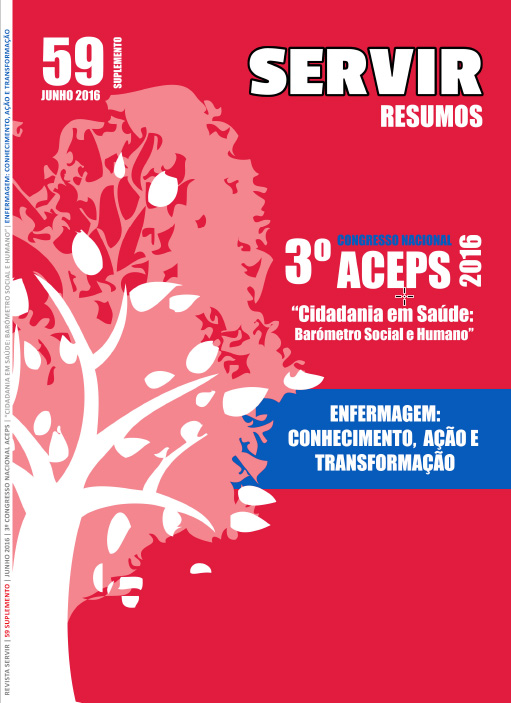The patient in palliative situation
implications of family functionality in meeting the family face to health care
DOI:
https://doi.org/10.48492/servir0259.23202Palabras clave:
Family, Paliative care, Family satisfactionResumen
Introduction
Having a sick family member, especially in palliative care, is a crisis in the family system. It generates a lot of stress, because the disease is felt by family members as a threat due to the unpredictability of events and changing needs (Pereira & Lopes, 2012).
Objectives
To identify the socio-economic variables that interfere with the satisfaction of family members of patients in palliative situation; To analyze the effect of family functionality in satisfaction of family members of patients in palliative situation.
Methods
Quantitative, descriptive and cross-sectional study in a non-probabilistic convenience sample of 150 families of patients in palliative situation in Palliative Care Units in central Portugal, aged between 16 and 81 years and a mean of 37.17 (SD=1.279).
Instruments: Family Apgar Scale (Augustine and Rebelo, 1988); scale FAMCARE - Kristjanson (1993), translation by Almeida (2012). The study of reliability of FAMCARE obtained internal consistency (Cronbach Alpha) of 0,964.
Results
Family functionality is better among men (M = 81.50 ± 16.725 SD). No statistically significant (Z = -0.786; p = 0.432).
Overall, 25.3% of family members showed to be very satisfied, 47.3% moderately satisfied and 27.3% somewhat satisfied with the health care provided to his family.
In males the level of satisfaction is higher (OM = 77.21) as opposed to women (OM = 74.28), with no statistical difference (Z =-0.291; p = 0.771). The family aged ≥44 years are more satisfied about the availability of information. Participants with a monthly household income greater than four times the minimum wage are more satisfied with the information, availability and physical care. Family members with high family functionality show a higher level of satisfaction with provided care.
Age and family functionality are predictors of all dimensions of satisfaction.
Conclusions
Greater satisfaction withthecareprovidedwas encountered within the oldest and better family functionality. These variables must be considered when we plan differentiated assistance to the families of patients with palliative needs.
Descargas
Descargas
Publicado
Cómo citar
Número
Sección
Licencia
No intuito de promover a livre circulação do conhecimento, a Servir funciona em regime de acesso livre (open access). Todo o seu conteúdo está disponível e protegido sob a licença Creative Commons (CC BY 4.0).
A revista permite o auto-arquivo em repositórios institucionais de todas as versões, podendo ficar imediatamente disponíveis.


